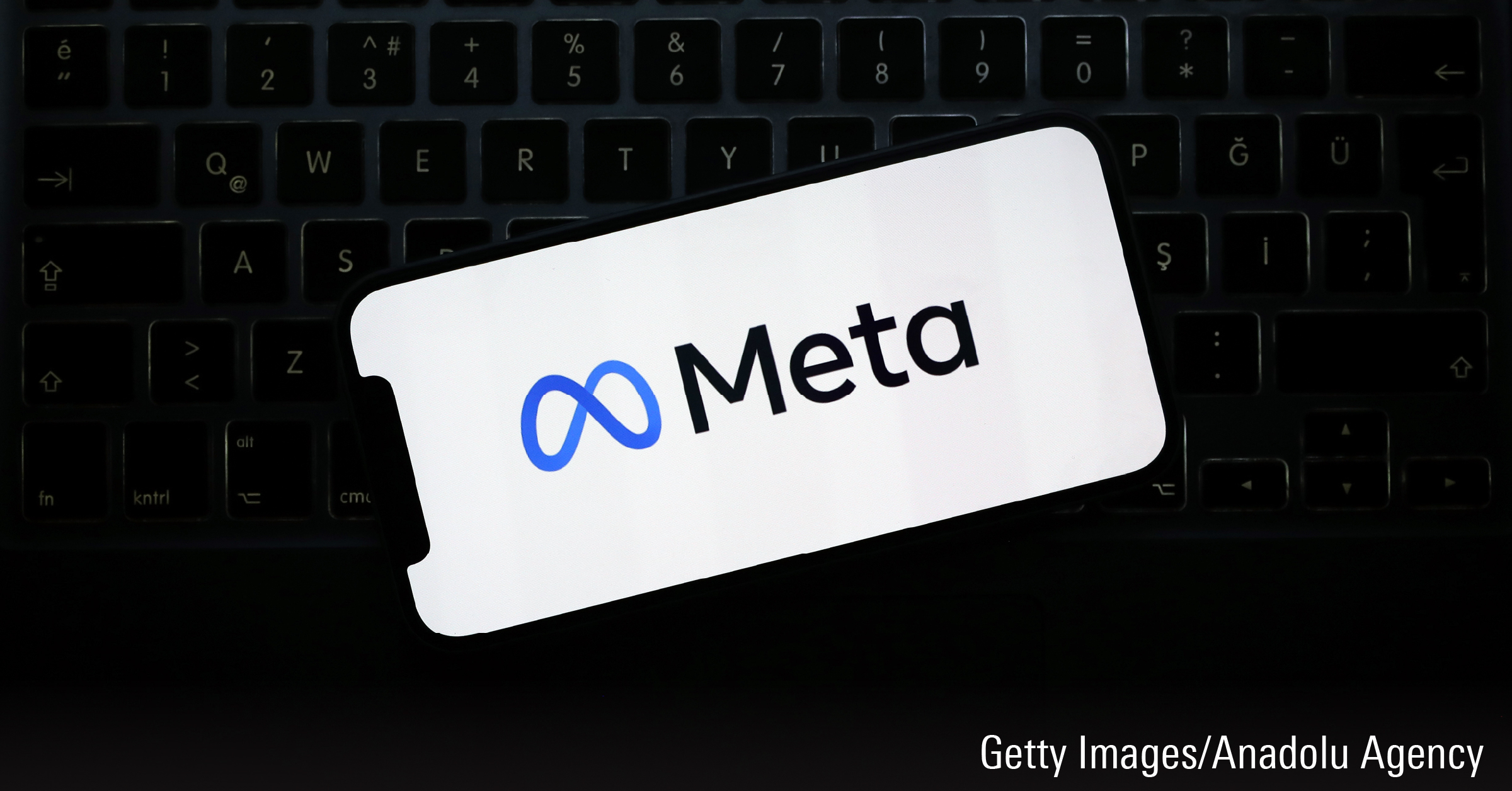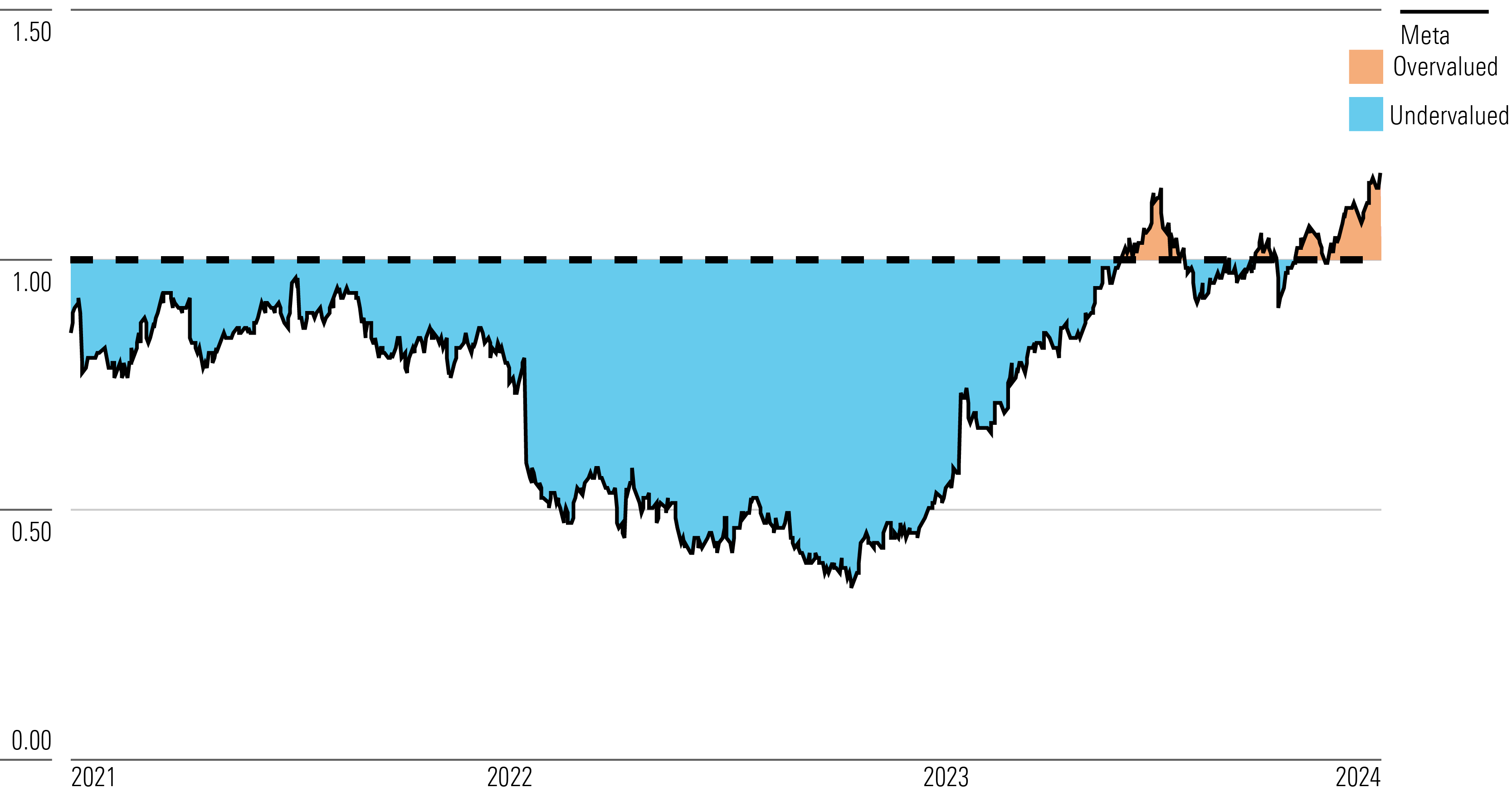Going Into Earnings, Is Meta Stock a Buy, a Sell, or Fairly Valued?
After a big 2023 rally in Meta stock, here’s what we think of the company’s outlook.

Meta Platforms META is set to release its fourth-quarter earnings report on Feb. 1, 2024, after the close of trading. Here’s Morningstar’s take on Meta’s earnings and stock.
Key Morningstar Metrics for Meta
- Fair Value Estimate: $322.00
- Morningstar Rating: 3 stars
- Morningstar Economic Moat Rating: Wide
- Morningstar Uncertainty Rating: High
What to Watch for In Meta’s Q4 Earnings
- The 194% jump in Meta’s stock in 2023 was due to user growth, engagement, and monetization with a leaner operation.
- We look for further improvement in revenue generated from Reels. It keeps attracting more advertisers, and its impact on Meta’s advertising revenue is likely positive after being neutral last quarter and negative in the past.
- We expect further improvement in Meta’s data analytics, campaign planning, and measurement tools using artificial intelligence.
- Some data indicates that ad prices have increased from last year, including for social media, which bodes well. However, we do see revenue growth deceleration in 2024 as the transition from traditional to digital is nearly complete. In addition, Morningstar has projected a slowdown in U.S. economic growth in 2024.
- While headcount is expected to grow, we see a slowdown in hiring as the firm is focusing on making individuals more efficient and productive. We expect further indications of cost controls remaining intact.
Meta Platforms Stock Price
Fair Value Estimate for Meta
With its 3-star rating, we believe Meta’s stock is fairly valued compared with our long-term fair value estimate.
Our fair value estimate is $322 per share, representing an enterprise value of 11 times our 2024 adjusted EBITDA projection. We have modeled a 10% average annual growth over the next five years. As the firm’s increasing efficiency as a result of its restructuring will more than offset its plans to further invest in research and development, content creation, data security, and virtual/augmented reality offerings (or metaverse), we see its average operating margin improving in 2023-27. We expect an average operating margin of 36% during the next five years, above the previous three years’ 34%.
Meta’s revenue growth will be driven primarily by online advertising and increasing allocation of dollars toward mobile, video, and social network ads. We expect a solid 15% growth in 2023 ad revenue, followed by 10.4% growth in 2024, assuming an economic rebound and an increase in Reels monetization. We expect Meta’s monthly active users to grow about 2% annually, mainly due to growth in Asia and the “rest of the world” geographies. We also assume a deceleration in overall advertising revenue per user growth to 6% per year over the next five years, down from the average of 14% over the past five years.
Read more about Meta’s fair value estimate.
Meta Historical Price/Fair Value Ratio

Economic Moat Rating
We assign Meta a wide moat based on network effects around its massive user base and intangible assets comprising a vast collection of data that users have shared on its various sites and apps. Given its ability to profitably monetize its network via advertising, we think Meta will more likely than not generate excess returns on capital over the next 20 years.
Now that Meta has emerged as the clear-cut social media leader, we believe that its offerings—consisting mainly of Facebook, Instagram, Messenger, and WhatsApp—have strengthened its network effect, whereby these platforms become more valuable to users as more people join them. These network effects create both barriers to success for new social media networks and barriers to exit for current users, who might leave behind friends, contacts, pictures, memories, and more by departing to alternative platforms.
Read more about Meta’s moat rating.
Risk and Uncertainty
We believe that while barriers to exit for Meta’s nearly 3 billion users may be increasing, the risk remains of another disruptive and innovative technology luring users away (most recently TikTok). We do not expect competition in the form of a substitute for Meta, as most consumers use more than one social media platform. However, given the fixed number of hours per day, an increase in usage and engagement on one platform could come at a cost to others, reducing engagement and the potential return on investment for advertisers. Furthermore, even with Meta’s dominant position, its high dependence on the continued growth of online advertising could heighten the negative impact of a lengthy downturn in online ad spending, resulting in a much lower fair value estimate.
The firm’s high dependence on user behavior data also represents an environmental, social, and governance danger. The risk remains that limitations could be imposed by regulatory agencies around the world on what user and usage data Meta can compile and how that data can be utilized. Lack of data privacy and security plus data misusage could negatively affect users.
Meta’s additional ESG risks are part of the firm’s business ethics and product governance. Questions regarding data usage and content management, and whether Meta has double standards, remain and may resurface. This issue will also create uncertainty around the firm’s product and feature offerings.
Read more about Meta’s risk and uncertainty.
Meta Bulls Say
- With more users and usage time than any other social network, Facebook provides the largest audience and the most valuable data for social network online advertising.
- Meta’s ad revenue per user is growing, demonstrating the value advertisers see in working with the firm.
- The application of AI technology to Meta’s various offerings, along with the launch of VR products, will increase user engagement, driving further growth in advertising revenue.
Meta Bears Say
- Meta is currently a one-trick pony and will be affected severely if online advertising no longer grows, or if more advertising dollars shift to rivals like Snapchat.
- Despite rapid user growth, many of Meta’s customers also use other social networks, such as Snapchat or TikTok, so the firm must continually fight to capture user time and engagement.
- Regulations could limit the application and collection of user and usage data, or restrict its acquisition, affecting data utilization and growth.
This article was compiled by Freeman Brou.
The author or authors do not own shares in any securities mentioned in this article. Find out about Morningstar’s editorial policies.


/cloudfront-us-east-1.images.arcpublishing.com/morningstar/ZPLVG6CJDRCOTOCETIKVMINBWU.png)
/cloudfront-us-east-1.images.arcpublishing.com/morningstar/ZZSPP5AYAJB2RIRVFE2XR23GUQ.jpg)
/cloudfront-us-east-1.images.arcpublishing.com/morningstar/NYUEHSFI4BDCJPQZJ76HH4PKSM.jpg)